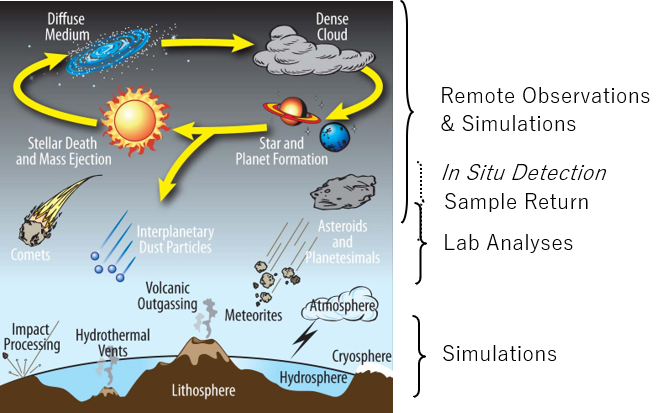Astrobiology Analytical Laboratory
Astrobiology Analytical Laboratory
A little over 4.5 billion years ago, our solar system was a disk of gas and dust, newly collapsed from a molecular cloud, surrounding a young and growing protostar. Today most of the gas and dust is in the spectacularly diverse planets and satellites of our solar system, and in the Sun. How did the present state of the planetary system come to be from such undistinguished beginnings? The telling of that story is an exercise in forensic science. The "crime" occurred a long time ago and the "evidence" has been tampered with, as most planets and satellites display a rich variety of geological evolution over solar system history.
Fortunately, not all material has been heavily processed. Comets and asteroids represent largely unprocessed material remnant from the early solar system and they are represented on Earth by meteorites and interplanetary dust particles (IDPs). Furthermore, remote observations of the birth places of other solar systems allow researchers to simulate those environments in the laboratory or collect material from Earth analogs so that we may characterize the organic material present. Materials returned from space by missions provide even less altered evidence and a better chain of custody than meteorites and IDPs.
The Astrobiology Analytical Laboratory employs commercial analytical instruments, similar to those used in forensic labs. However, ours are configured and optimized for small organics of astrobiological interest instead of blood, clothing, etc. Specifically, we focus on the molecular distributions, enantiomeric ratios, and isotopic compositions of organic compounds in extraterrestrial material and compare them to those found in terrestrial biology and those synthesized under simulated prebiotic conditions to inform the search for extraterrestrial biology and origin of life on Earth.

Ways to study organic compounds that were present on the ancient Earth (After Deamer, et al. 2002)
